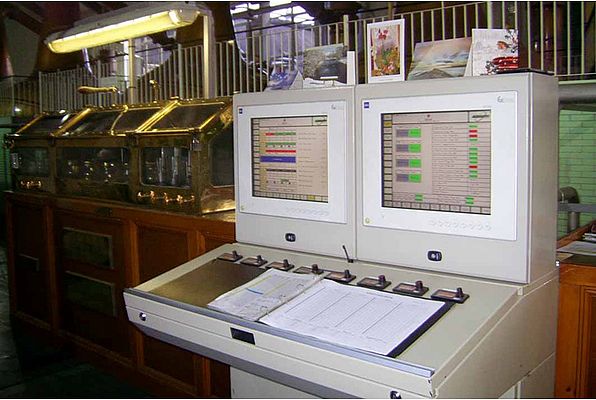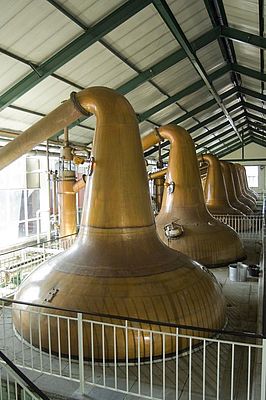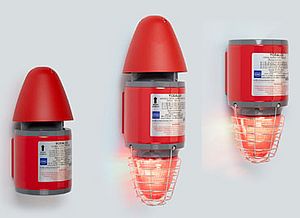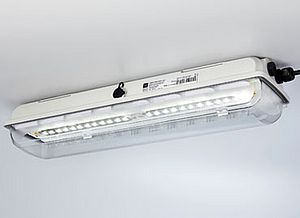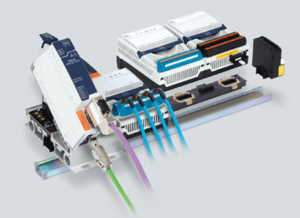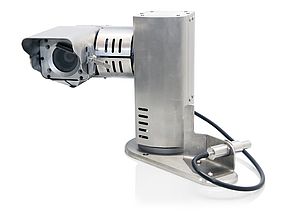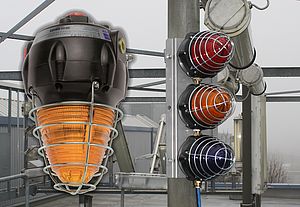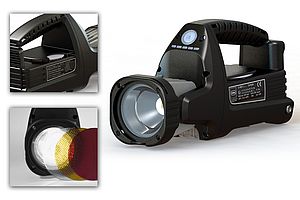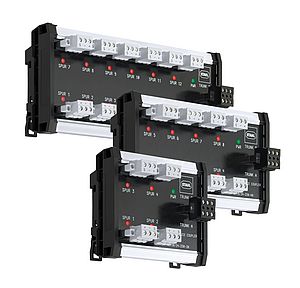Whisky is the result of a series of processes that need careful monitoring as most of them take place in hazardous areas. The Ardmore Distillery modernised its production, applying Ex-protected touchscreen HMIs.
Whisky needs to mature for a long time to reach peak quality - and it best stays undisturbed during that time. At the beginning, however, the preparation requires all the more attention: The spirit is the result of a chain of processes that need careful monitoring. The main part of the process takes place in hazardous areas. The Ardmore Distillery close to Aberdeen had its operating and monitoring equipment for the production modernised, introducing Windows-based, explosion-protected touchscreen HMI systems.
The distillery is located in Speyside, the most productive of the five regions of Scottish Whisky production, where about half of all active distilleries are located. In addition to its own brand single malts, the Ardmore Distillery also produces malt whiskies for blended malts. The distillery is one of the biggest in the whole of Scotland. Founded at the end of the 19th century, the distillery has been rebuilt and expanded several times during the last few decades. Now that the control system of the main distillery has been expanded to include the automatic valves of the external tank farm, operating and monitoring tasks can be carried out comfortably at a double station running Windows software and consisting of two Ex-protected 19-inch touchscreen PCs.
High-proof spirit under lock and key
A step-by-step process takes the malted barley through the distillery until it emerges as a storable spirit. The fully automated system allows staff to control and monitor all phases of the distilling process from a central point. This central location is at the heart of the still-house, right next to the spirit safe, a glass cabinet locked by customs and excise. This is where the most recent modernization was undertaken, with the aim of implementing a state-of-the-art HMI solution. Ardmore Distillery commissioned Advanced Electronics with the selection and installation of this solution, as they had been responsible for the modernization of the still-house electronics in 2001.
Advanced Electronics carry out electrical, control and instrumentation installations for a wide range of customers predominantly in the distilling and food industries throughout Scotland. The company is not only successful at recommending products outside of their remit, but also at building and maintaining their own range of PLC, HMI and SCADA systems. Once Ardmore's specific requirements had been identified, various possible solutions were evaluated. The decision was made to test an Ex-protected PC operating system from R. STAHL for two weeks. This test was successful. As a consequence, two 19-inch touchscreen devices of the Open HMI ET-456 series were ordered.
Flexible software base
The main reason for choosing this series - in addition to their construction and the powerful hardware of the panel PCs - was the user-friendliness of the Windows XP Embedded system. As Ewen McDonald, Contracts Manager at Advanced Electrics, explains: “We chose the R.STAHL hazardous area PC system as the ideal HMI for the Ardmore still-house because of the flexibility of the Windows operating system, which allowed us to use the same software as the existing safe area HMI’s in other areas of the site. We were also impressed by the robust construction and build quality of the PC that we had on evaluation.”
The Open HMI ET-456 is an easy to maintain product containing no fans, moving parts or batteries. The system is fully certified for hazardous gas and dust environments. The touchscreen increases user-friendliness - this is of particular importance in cleanrooms in the food industry, for example, where even staff in full protection gear can operate the systems easily with gloved hands. If required, optional accessories such as separate keyboards, pointer devices and special input devices such as Mifare and barcode readers are also available. The Windows operating system is pre-installed, ensuring that the product can literally be plugged and played with an operational lifespan of over 50,000 hours.
State-of-the-art hardware
Open HMI systems can not only be installed separately (standing or hanging), but can also be fully integrated into control panels. Despite their robust design, the devices are easy to service. Trained personnel can open their housings right in the hazardous zone to replace individual components. On the inside, the systems consist of modules with individual explosion protection - the optimum type of explosion protection has been implemented separately for each individual module.
The central unit of the devices installed at the Ardmore Distillery is an Intel Pentium M processor. At this specific location these processors can guarantee consistently good performance with high energy efficiency. At other locations, however, the performance of such systems might be reduced. In the case of extremely high ambient temperatures of up to 50 °C, which can regularly occur in certain applications in hazardous areas, Pentium M processors reduce their clock rate in order to prevent excessive core temperatures inside the closed housing Because of this, the latest generation of Open HMI systems is now equipped with Intel Atom CPUs. These processors also do not require fans inside closed housings. Thanks to their reduced energy requirements, their architecture has the additional advantage that the systems can be operated constantly at temperatures ranging from -30 °C to +50 °C (and briefly even at +55 °C) without any reduction in performance. A great number of international certifications guarantee that the systems can be installed world-wide.
Conclusion
In contrast to the distillery's products, which achieve their high quality with time, the HMI solution installed at Ardmore proved its merit right from the start. The explosion-protected PCs were delivered on schedule in January 2008 and installed in July during a maintenance shutdown period. By now, the robust systems have proven themselves during operations for over two years. The operators continue to be satisfied with design, configuration and performance of these comfortable systems. The continuous optimisation and modernisation of the Open HMI range is not limited to the use of the most up-to-date processor technology, but also includes the constant upgrade to new, available screen sizes. At present, screens with up to 24" wide-screen format with full HD resolution are available.


